Your Kid Is Limitless (If You Believe They Are)
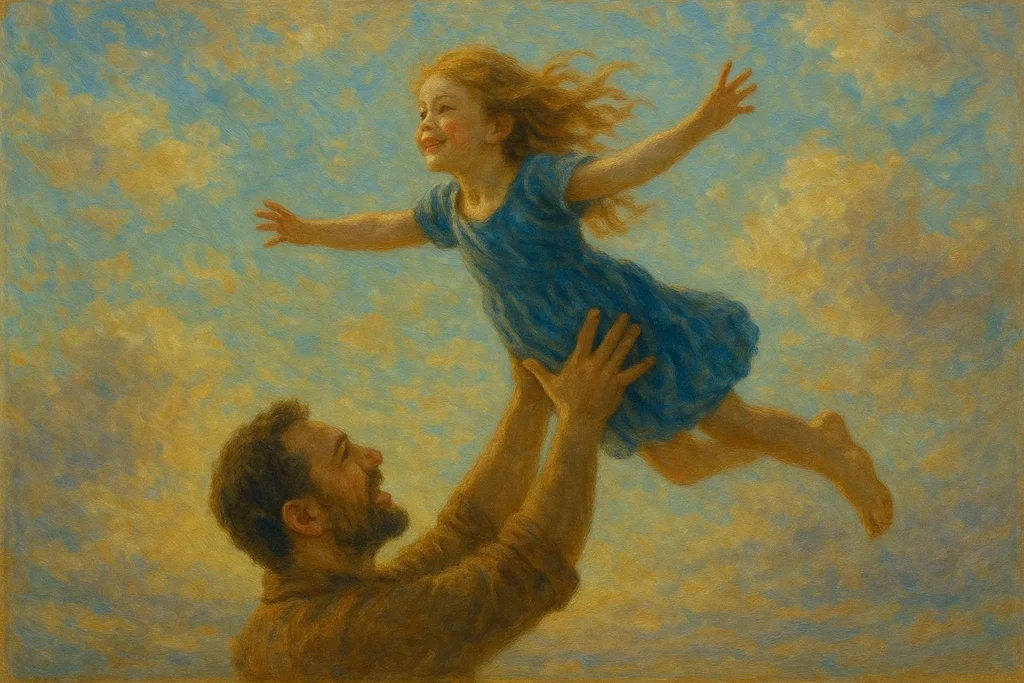
Most parents love their kids. Fewer believe in them. What many parents don’t realize is that kids will grow or shrink to fit the mold we create for them. If you believe your kid is strong, smart, bold, successful — they will rise to the challenge. But if you believe your kid has limits, they will shrink to fit your expectations. This psychological phenomenon is called the Pygmalion Effect. It’s coined after the Greek myth of Pygmalion, a sculptor who fell in love with a statue he carved, which later came to life — symbolizing how belief can shape reality. In 1968, the Pygmalion Effect was officially brought to life in education. Psychologists Robert Rosenthal and Lenore Jacobson conducted a study where teachers were told certain students in the classroom were expected to show intellectual growth. The students (randomly selected) ended up actually performing better than their classmates — all because of their teacher’s elevated expectations. I don’t think we realize how powerful the Pygmalion Effect is. When you believe in your kids’ potential — truly believe in them — they will internalize these beliefs and rise to the occasion. On the other hand, low expectations can diminish their confidence and performance, resulting in their tendency to shrink to fit the mold. It starts with language. “He’s not great with numbers.” “She’s more of a creative type.” “That’s not really her thing.” These casual phrases become deeply embedded self-identifiers. That can be a harmful thing. (Or, an amazing thing, depending on how we use it!) Read the full article here
Your kid will use AI to cheat or become a genius
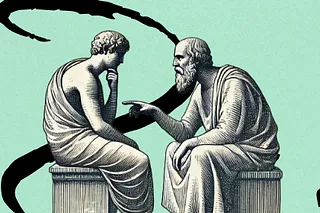
The choice is yours. All technology presents a choice. For example, the internet. Many people use it to dramatically enrich their lives: building businesses, creating new revenue streams, and forging new connections that span continents. At the same time, many others use it to diminish their potential: distracting themselves into oblivion and clicking onyet another funny dog video while the greatest minds in history lie dormant at their fingertips. Technology is either a catalyst for creation or a slippery slope into intellectual erosion. AI works just the same. It will either destroy education or become the greatest learning tool ever invented. Kids will either use it to cheat or become a genius. There is no in-between. Wrongful use of AI is already infiltrating the classroom Remember when cheating required effort? When you had to slip cash to the kid who actually did the reading, or trade your lunch for the study guide with all the correct answers? Now, it only takes a few words and a prompt box. And we already know that kids are taking full advantage of this. 26% of K-12 teachers have already caught a student cheating with ChatGPT. Roughly one in ten papers are submitted containing at least 20% AI-generated content. 56% of college students have used AI on an assignment or exam. Believe it or not, I don’t think AI is the problem here. There’s a deeper issue — why do kids want to cheat in the first place? A few reasons: Kids don’t care about the material Kids feel underprepared for the material. (As well as the suffocating pressure of “getting the A,” but that’s another conversation!) Both reasons indicate something is amiss in the classroom. But in the traditional teacher-in-front-of-the-classroom model, not much can be done. Kids cannot receive the one-on-one attention they need, nor do they learn to mastery (which unlocks their motivation to learn and grow). So, most kids stay bored or fall behind. The convenient thing to do in both scenarios is reach for ChatGPT. It is not AI, but the wrongful use of AI, that is posing such a threat. And the heart, the core, the epicenter of this misuse is an educational model that does not accurately prepare or challenge kids for the future. Which means, ironically enough, AI itself can be the solution to its own problem. How AI tutors are revolutionizing education Read the full article here
How to win the AI war on writing
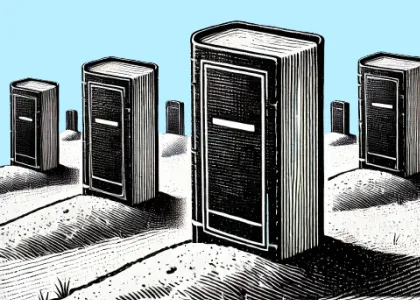
AI is ruining English class as we know it. Teachers are quitting, students are cheating, and overall performance is down. But AI itself is not the problem. In fact, when used correctly (or, as people like to say, “ethically”), AI could be one of the best things to ever happen to writing education. It might just elicit a writing renaissance, bringing great writing — and I mean, really great writing, the kind of juicy prose and delicious ideas that burst across your intellectual taste buds like a ripe summer peach — back into education. Because let’s be honest. It’s way overdue. Many educators, politicians, and tech bros alike think AI will give writers the boot. Thanks for your time as a writer! Happy career-hunting! But I say the opposite. AI will not make great writing obsolete. It will make it necessary. It will put it on the map. Today’s writing education mostly sucks (sorry) Writing has a notoriously terrible reputation in school. Remember the five-paragraph essay? My guess is these five paragraphs are where the initial joy of writing is often laid to rest. If we’re being honest, English class teaches you how to make your writing as boring as possible. It’s like a graveyard for play and experimentation. Students who do enjoy writing most likely do so because they enjoy reading: a novel hidden inside a textbook, a memoir devoured in the carpool line. They love writing despite English class, not because of it. Unfortunately, this boring, formulaic way of writing does not leave us in childhood. It haunts us into adulthood — specifically, the workplace. Our Slack messages and email threads sag beneath the weight of the same ole’ tired cliches. Most press releases and product announcements have all the flavor of an unseasoned chicken breast. This isn’t a knock against writers, but a testament to how traditional writing education falls short. Boring English class leads to adults who struggle to communicate anything that isn’t steeped in stuffy professionalism. No wonder AI is posing such a threat. (Who does stuffy professionalism better than ChatGPT?) Here’s why this matters. In our hyper-digital age, writing is how we communicate: texting, Tweeting, emailing, blogging, marketing — the written word is how we share our ideas with the world. (And, how we discover new ones.) If future generations want their ideas to rise above AI-generated content, then kids need to learn two things: Read the full article here
“Future-Proofing” 101
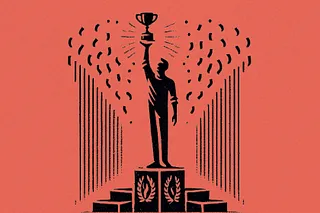
How to prepare your kids for a future that looks radically different from your past. Sixty-five percent. That’s the percentage of kids entering elementary school today who will work in jobs that don’t exist yet. It’s hard for us to wrap our heads around, isn’t it? Like trying to train for a sport without knowing the rules, the shape of the field, or whether or not it’s even played with a ball. This is the future our kids are hurtling towards. Which means, they need to be building “future-proof” skills. The familiar formula for success — study hard, get a degree, work the same job for 40 years, retire somewhere warm — is collapsing beneath the weight of technology and automation. Employees will no longer be rewarded for how long they’ve worked at the same firm or how high they’ve climbed the corporate ladder. Instead, their value will stem from their adaptability, their ingenuity, their resilience. The likelihood of your kid working the same job for forty years is low. Extremely low. Success isn’t just about working hard anymore. It’s about working smart. So, what does that look like in the classroom? How do we prepare kids for volatile job markets and unstable careers? How do we ready kids for jobs that don’t even exist yet? Four skills to future-proof your kid Read the full article here
Dabblers do not change the world
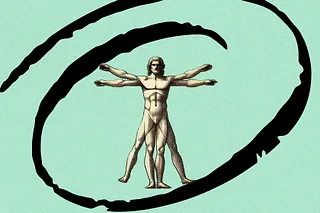
Have we taken “well-rounded” too far? “Well-roundedness” is the new North Star of education — but are we headed in the wrong direction? Chances are, you’re familiar with the chaotic rhythms of modern-day parenting: the soccer practices, guitar lessons, art classes, gaming clubs, and jiu-jitsu tournaments that shape our Saturday afternoons. But in the classroom, “well-roundedness” goes against the grain of genuine learning. Let me explain. In a conventional classroom, breadth of learning takes precedence over depth. Mastering the material doesn’t matter; only forward progression. One day it’s photosynthesis, the next the French Revolution, and the next, students are cramming for a test on quadratic equations. Regardless if they understand the material or not, they’re ushered through grade levels with breathless agency, like a traffic cop beckoning them across the sidewalk to get to the other side. The obsession with age-based progression over knowledge-based progression has blunted genuine education. It’s time to return to that. Before we dive into the magic of mastery learning, we need to cover three things: polymaths, hurry sickness, and the skills that will make your kids really, really rich. A brief history of “the well-rounded individual” Well-roundedness is rooted in the Renaissance ideal of the polymath. polymath (noun) Definition: A person of wide-ranging knowledge or learning, especially someone who has mastered multiple fields or disciplines. Don’t miss the key term here: “mastered.” A true polymath, like Leonardo da Vinci, is an insatiably curious learner who immerses themselves into their work with discipline and vigor. The goal is not to learn a little about a lot, but to learn a lot about a lot. Such is the appeal of “the Renaissance man” or “the Renaissance woman.” These types whip out polished skill sets like party tricks: they’re fluent in Mandarin, undefeated in chess, and can effortlessly recall the Interstellar theme song on the grand piano at the airport. In the 1600s, the only feasible reaction to meeting a polymath was to marry them. During the Industrial Revolution, things shifted. A new age was dawning — one of efficiency and utility. Factories needed workers who could do one thing well. Speaking four languages just for the heck of it was out. More practical skills, like assembling car parts for a steady paycheck, were in. Finally, after World War II, the pendulum swung one last time. College admissions became more competitive. (Who could pack their transcript with the most extracurriculars?) Progressive educators like John Dewey promoted the idea of educating the “whole child.” And by the late 20th century, parents were convinced that well-roundedness was the secret to their kids’ success. This lands us where we are today: a culture of “well-rounded” busyness that has bled into the classroom. Read the full article here
The Future Of Learning: Balancing Good And Bad Screen Time

Ask any parent about the challenges of raising kids in the digital age, and they’re likely to bring up screen time. Data from the American Academy of Child and Adolescent Psychiatry shows children between the ages of 8 and 12 spend an average of four to six hours a day on their screens, while teenagers spend up to nine hours a day. The recent release of Jonathan Haidt’s explosive bestseller, The Anxious Generation, has sent shockwaves through parenting communities worldwide. Haidt’s work doesn’t just raise concerns; it sounds a deafening alarm about the devastating impact of ubiquitous devices and social media on adolescent mental health. Parents are now grappling with what Haidt describes as a “mental health crisis” among youth, directly linked to excessive screen time and social media use. His findings have ignited a firestorm of worry and debate, leaving many parents feeling overwhelmed and desperate for solutions to protect their children’s well-being in the digital age. As a parent and educator, I often grapple with questions about the role of technology in our children’s lives. Spending hours mindlessly scrolling or consuming content with harmful messages can clearly have a negative impact on mental health. But not all screen time is the same. Read the full article here
“I turned out fine” is horrible rationale for education

Just because your education was exceptionally average doesn’t mean your kids’ has to be. “I went to traditional school and I turned out fine” is perhaps the most ludicrous defense that exists for education, and I’ll tell you why. “Fine” is the pasta primavera you’ll never order again. “Fine” is the lukewarm compliment from your husband that sends you racing back to your closet to change your outfit. In all other areas of life, “fine” is not good enough. But for whatever reason, “fine” is the apex of our educational expectations. I myself am a product of public school education (and yes, look, I turned out fine!), but that doesn’t mean I can’t ask questions, can’t raise my expectations. That’s why I’m writing to you today. To raise your expectations. Because “fine” is not the summit. It is the unremarkable plateau where we’ve set up camp and have forgotten there is an entire mountain left to climb. Just because something is normal doesn’t mean it’s optimal First, a question: why do we defend systems we know to be flawed? Simple. Because we grew up inside them. This is what cognitive scientist Dan Lortie calls the “apprenticeship of observation.” Thousands of hours spent in a classroom, absorbing the squeak of an expo marker, the clamor of lockers, the fluorescent glare of buzzing overhead lights. These experiences taught us more than just algebra or grammar — they taught us what school looks like, what education itself is meant to embody. But just because something is normal doesn’t mean it’s optimal. For example, homework. Believe it or not, homework is not an essential part of education — understanding a concept is. Homework is simply one mechanism to help students understand a concept. The tool, not the essence, if you will. But because homework was embedded so deeply into our school experience, we believe it to be an indispensable part of education. This is the trap of the familiar: believing what’s normal is what’s best. And that, my friends, simply isn’t true. Students at Alpha don’t do hours of homework each day. Why? They spend their afternoons applying what they’ve learned in real-time. It makes the knowledge stick better than a worksheet ever could. See? There are countless mechanisms to success. Aren’t you curious to know them? The mythology of school The tricky thing about school is that it’s not just a system, it’s a mythology. Think of all the movies that act as educational lore in American culture: The Breakfast Club, Mean Girls, Ferris Bueller’s Day Off, Dead Poets Society. Myths, as we know, are sticky. They cling to us, not because they are accurate, but because they are nostalgic and evocative. If I close my eyes right now, I can smell the hallways of my childhood — some strange concoction of lemon cleaning solution and sweaty gym shoes. I can hear the shrill squeal of the whistle at P.E., feel the splintery ridges beneath my desk where another student carved their name into the wood — permanent proof that TYLER WAS HERE. These are not memories of an efficient system. They are simply the relics of growing up. Beautiful relics, maybe. But mile-markers of a high-quality education? Certainly not. Maybe you feel pride in having “overcome the system.” I know I do. That doesn’t mean our kids have to endure the same struggles. Why do we enroll kids into a system we know they’ll have to overcome? Why not seek out a system that works with them, instead of against them? It’s a valid question that very few of us ask. Nostalgia is a powerful force, but it tends to romanticize the past. Education isn’t a rite of passage or a test of resilience. It is not trauma-bonding lore like the movies say. It is a tool to unlock our kids’ potential. And it’s time to start trying. The past is not a blueprint for the future. It is a culmination of valuable lessons — but what is a lesson worth if we don’t learn from it? I’ll let you answer that one. Status Quo Bias Read the full article here
Personalized learning doesn’t just raise the floor, it explodes the ceiling

And it’s more accessible than ever before. It’s 1847 in the maternity ward of Vienna General Hospital, where childbirth mortality rates are scary high — that is, until one physician named Ignaz Semmelweis makes a discovery that changes everything. He notices that one maternity ward, staffed by midwives, has significantly lower death rates than the ward run by professional doctors. So, he casts off all notions of the prevailing medical dogma of the time and instead, directs his full attention towards this single maternity ward. His discovery? Medical students were moving directly from performing autopsies to delivering babies — without washing their hands. The fix was simple. Wash your hands before treating every single patient. No exceptions. Just like that, mortality rates dropped almost 20%. And yes, this relates to education more than you think. Personalized attention begets transformative outcomes. One-on-one education has always been the most potent form of learning. Did you know that aristocrats refused to travel without their personal tutors? There is even a distinct connection between one-on-one tutoring and the creation of genius: Einstein had Max Talmud, Virginia Woolf had Janet Case, Mozart had his father — the list goes on. But somewhere along the way, we’ve lost the thread. Tutoring became an after-school program replete with SAT prep questions and bored kids perpetually eyeing the clock on the wall. I’d even venture to say that tutoring is now a negative thing. It’s an embarrassed confession, an admission of failure. “I have a tutor” is shorthand for “I’m not good enough.” How did we let this happen? The truth is, personalized learning works. It’s why we fall back on tutoring when classrooms fail. And it’s more than just intuition; it’s science. Educational psychologist Benjamin Bloom proved this decades ago in 1984 with his famous 2 Sigma Problem: students who received one-on-one tutoring performed two standard deviations better than their peers in conventional classrooms, outperforming 98% of their classmates. Two sigma! Twice as effective! graph from Learner Personalized education doubles learning efficacy for kids; and it’s been every educator’s dream to implement this everywhere for the last 200 years. But there’s been very little we could do about it. Most families can’t afford to pay for a tutor (much less their air fare), and it’s impossible to provide entire classrooms with a personalized curriculum. And even if that was possible, we’d be scraping the bottom of the barrel trying to find 1) skilled-enough tutors, and 2) enough skilled-enough tutors. This is why Bloom’s 2 Sigma Problem is just that: a problem. Individualized education, while ideal, has never been feasible. Until now. AI makes personalized education for every kid possible Did you know that AI tutors are now more effective than Harvard professors? Not only do Harvard students learn more than twice as much with AI, they learn in less time with more motivation. You wouldn’t think it’s possible, but it is. And that’s just the beginning. Let’s look at some more numbers. On average, personalized education leads to: Read the full article here
How AI will transform education, from PreK to PhD

There has never been a better time to be five years old. I often get asked this question: “If AI knows everything, why should my kids learn anything at all? Isn’t education obsolete?” My answer is visceral and immediate: No, education will never be obsolete. It’s actually more important than ever. But it does need to adapt. Massively. A few times per century, some new technological invention drops from the sky and uproots life as we know it. Whether we like it or not, we’re thrust into a “new normal,” one that significantly disrupts the pattern of our daily lives. People once thought the Industrial Revolution was the end of the world. And in some ways, it felt like it. People were scared, uncertain, powerless. Thousands of jobs were lost. But in the long-term, hundreds of thousands of jobs were created. Now, for you and me, everyday tasks are glossed with an ease and convenience that previous generations could have never dreamed of. All we had to do was adapt. We did it again with the Internet. And again, with the iPhone. And we will do it again with AI. Because beneath newfangled gadgets and innovations and movements, the human spirit throbs like a persistent pulse. We fear, endure, adapt, innovate, create, then marvel at what we’ve done and how far we’ve come. Eventually, we look back and say, “How did we ever manage without this thing?” And the cycle repeats itself. The first 20 years of a person’s life no longer look anything like the experience of earlier generations. That may sound scary, but I promise you: there has never been a better time to be five years old. The five phases of education (as we know it) Let’s start with a quick look at how education works without AI. Learning happens in five phases: Pre-K to 3rd GradeKids set the foundation of their education. They learn the basics: letters, numbers, how to read and write. There’s a popular adage: “Until 3rd grade, kids learn to read. After 3rd grade, they read to learn.” 4th Grade to 12th GradeThese years are all about mastering a standardized curriculum. In the U.S., that’s Common Core and AP courses. The goal is to stuff kids’ heads with as much knowledge as possible. CollegeStudents begin to learn from seasoned experts. College classes are less about standardized test scores and more about domain expertise. For the first time, students can break away from generalized curriculum and dive deep into niche pockets of education: gothic literature, applied mathematics, biochemistry, the history of ancient Mayan civilization — you name it. Master’s ProgramsNow, students shift to becoming experts themselves. “School subjects” become “career goals.” Students are no longer concerned with pure consumption of knowledge, but the long-term execution and creation of it. PhD ProgramsFinally, the PhD shifts from mastering knowledge to creating it. Students officially break their “student” mold and step into the role of “inventor,” “creator,” and “industry expert.” As you know, this is an arduous, expensive formula that can span the length of decades. Certain things must happen to elicit certain outcomes. Creation requires mastery. You can’t expand a frontier if you don’t know the existing frontier like the back of your hand. The human knowledge graph is an intricate web of successes and failures, from caffeine-fueled all-nighters to heated debates with professors to actually being in the field, boots on the ground, testing, trying, experimenting, hypothesizing. Knowledge is the result of generations standing on the shoulders of giants. Example of a knowledge graph in the realm of philosophy And now, a new giant (albeit, artificial) has entered the scene. And it will significantly change learning as we know it. Sacrificing learning in the name of AI isn’t just defeatist, it’s destructive You and I both know that education isn’t just about learning or thinking; it’s about learning how to learn, thinking about how to think. Throwing up our hands and saying, “Well, there’s no point in learning if AI can do it all!” is a destructive mindset. It’s the path to unlocking “scary AI” — the kind of existential threat that takes over the world because we have allowed technology to use us and not the other way around. What most of us are not seeing is this: AI can help our kids accomplish things no generation before them has ever been able to do. It will fill their minds with more knowledge than ever before, faster than ever before. It will enable their minds to be the most interesting places in the world. Can you imagine? If your kids’ own ideas were more exciting than the brain rot of TikTok or the addictive slop of video games? A few years ago, AI couldn’t beat a third grader in a math test. Now it can beat most Master’s students. AIs today are on track to become experts in every single academic field. What AI cannot do is create new knowledge at the capability level of humans, especially in fields where it doesn’t have gigabytes of training data. And this is where humans can thrive. Four ways AI will transform education Our idea of education is this: twenty-five students, one teacher, everyone learning the same thing at the same pace at the same time. Some kids are bored and drooling, others are frustrated and struggling, and teachers are oversaturated with responsibility. Bell rings. Class dismissed. These days will soon be over. Here are the four integral ways AI will transform education. Read the full article here
Why traditional school is broken (and how we’re fixing it)

Our education manifesto. The greatest untapped resource on the planet isn’t nuclear energy or deep-sea minerals, genetic engineering or outer space exploration; it’s human potential. And what human has more potential than a child? You’d think we’d pour our best effort into educating them, exhausting all possible options. But we don’t. Most parents know more about the difference between the oat milk from Trader Joe’s and the oat milk from Whole Foods than they know about their own kids’ education. (Not an insult, just a fact.) And it’s why I’m writing to you today. To be clear, I don’t enjoy harping on the fact that conventional education is broken. There are too many rage-baiters and doomsdayers out there: “public school sucks!” or “save your kid from public school while you still can!” I am not one of them. That’s coming at the problem from the wrong angle. Parents shouldn’t have to ask, “What’s wrong with my kids’ school?” They should be asking, excitedly, “How good can my kids’ school really get? How high is high?” But to answer that, we have to first understand where we are. And to be honest, it’s not pretty. My goal is to give you the unvarnished truth of our education system as a whole, so you can start building your own opinion and making the best possible decision for your family. Let’s start from the beginning. 400 BCE: The golden age of personalized education For over 1,000 years, education was a deeply personalized experience. It was the golden age of tutors: Socrates tutored Plato, who tutored Aristotle, who tutored Alexander the Great. You get the picture. The problem was, only the wealthy could afford high-quality tutors. Personalized learning may have been the pinnacle of education, but it was far from accessible. Naturally, alternative solutions were born. Read the full article here